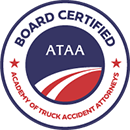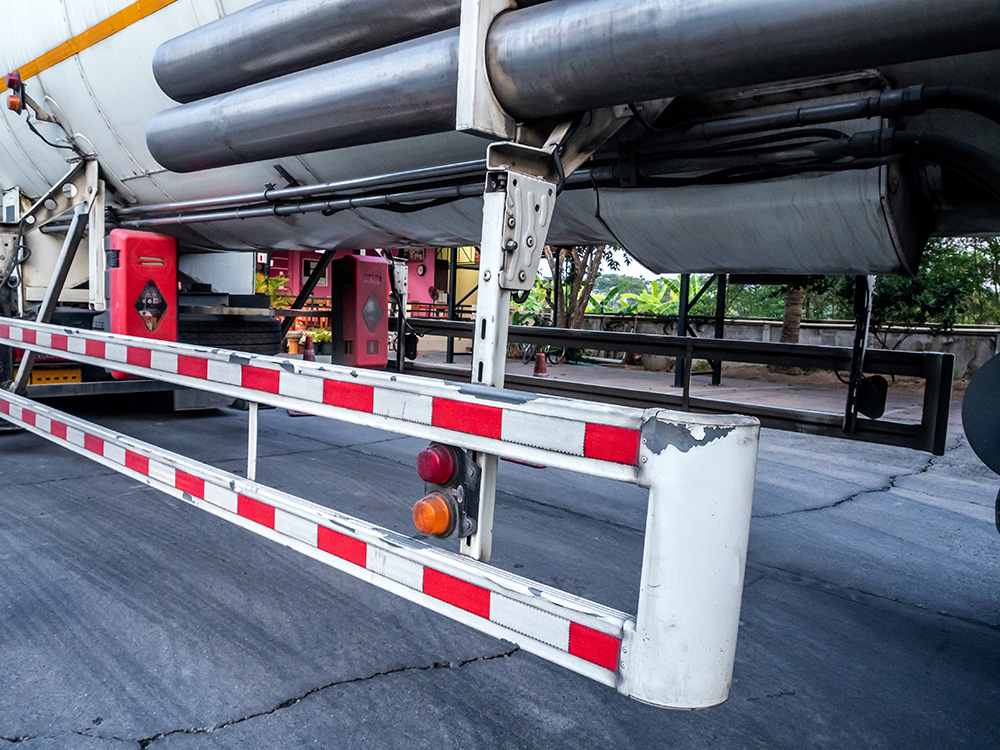Officials Reject DOT’s Side Guard Recommendations to Make Large Trucks Safer
Underride crashes are among the most dangerous types of truck collisions. When a vehicle, cyclist, or pedestrian slides underneath the body of a truck, the chances of death are shockingly high. So why did officials reject DOT’s side guard recommendations to make large trucks safer?
Unfortunately, trucking industry pressure reshaped and toned down what could have been one of the most effective safety advances in recent years. Let’s examine the history and impact of failed underride guard legislation in the United States.
Key Highlights:
- Side guards have been shown to reduce the number of pedestrian and cyclist deaths.
- Trucking industry leaders continue to resist regulatory efforts to require side guards on commercial vehicles.
- Pressure from the American Trucking Associations reshaped side guard recommendations from the U.S. Department of Transportation.
Department of Transportation Officials Reject Side Guard Recommendations
Alarmed at the growing number of pedestrian and cyclist deaths, researchers with the U.S. Department of Transportation (DOT) began researching ways to reduce the number of deadly big truck accidents starting in 2017. They focused their research on side guards.
A side guard is a safety device that, when affixed between the front and rear tires on a truck, prevents pedestrians and cyclists from sliding underneath the vehicle during a collision. They are especially effective at reducing deaths in right-turn accidents in urban environments, when big trucks can easily cut off pedestrians or cyclists. In larger trucks (including 18-wheelers), side guards prevent underride crashes with smaller passenger vehicles.
Researchers concluded that side guards are an effective safety measure that would save the lives of pedestrians and bicyclists.
However, despite years of research and evidence, DOT officials have roundly rejected any type of regulations that would require trucking companies to install side guards on trucks that operate in urban and suburban areas.
Influence and pressure from the American Trucking Associations (ATA) is believed to have played a major role in the DOT’s refusal to recommend any regulations.
Side Guards Are Effective at Reducing the Number of Pedestrian and Cyclist Deaths
The DOT does not collect specific data on the number of deaths per year that are caused by people falling or sliding underneath big trucks. However, by accessing and analyzing outside data, researchers concluded that an average of 125 cyclists and pedestrians die in this way every year.
Based on their research, they concluded that side guards could potentially save the lives of 52 people annually.
This is significantly higher than previous estimates by the National Highway Traffic Safety Administration (NHTSA), which estimated that side guards could only save 18 lives per year.
Dozens of other countries have implemented side guard requirements with great success, including:
- Japan
- China
- Peru
- Brazil
- Australia
- The United Kingdom (UK)
When the United Nations implemented an international side guard standard in 1988, it was ratified by the European Union and 43 other countries.
The United States is one of the few developed countries to ignore the safety benefits of side guards on delivery trucks, 18-wheelers, and other big trucks.
A History of Side Guard Requirements in the United States
Although there are currently no federal regulations requiring trucking companies to equip all fleet vehicles with side guards, several cities have taken action on the matter. Let’s review a brief history of side guard use and regulation in the United States.
- 2007 – Heavy trucks killed two bicyclists in separate accidents in Portland, Oregon. This prompted the city to launch a pilot program that equipped municipal trucks with side guards.
- 2015 – The city of Boston enacted an ordinance that mandated side guards be installed on all city-contracted vehicles with a gross vehicle weight rating (GVWR) of 10,000 pounds or more, and all tractor-trailers with a combined weight of 26,000 pounds or more.
- 2017 – The Seattle Department of Transportation began requiring side guards on city-owned heavy trucks.
- 2018 – The city of Chicago enacted an ordinance requiring all city contractors to install side guards on trucks. Full compliance was required by July 1, 2021.
- 2018 – The City of Philadelphia began requiring side guards on trash hauling trucks.
- 2021 – The City of New York enacted a law requiring side guards on all trucks in the city’s fleet, and on city-contracted vehicles with a GVWR of 10,000 pounds or more.
The above is an incomplete list of all side guard regulations and requirements in the U.S.
The DOT’s Most Recent Side Guard Recommendations
When DOT officials began drafting their side guard recommendations based on the research that began in 2017, official documents leaned strongly toward regulating the use of side guards on all large trucks. However, the DOT granted the ATA broad access to drafts of their research and recommendations.
Internal documents, emails, and calls document a disturbing back and forth between DOT officials and members of the ATA. The ATA repeatedly exercised control over the process. Following a 2018 meeting with the ATA, the project’s department supervisor sent an email to DOT researchers explicitly directing them to delete any mentions of the word “regulation.”
When the report on the use of side guards in the trucking industry was finally released in 2020, it was nearly 70 pages shorter than its original version. The published report lacked many of the original recommendations, research, and key conclusions.
The ATA, an industry group focused on protecting the trucking industry, had fundamentally reshaped the report.
Trucking Industry Officials Prioritize Profits Over Safety
Research has proven that side guards on both light and heavy trucks are effective at reducing the number of fatalities in sideswipe and underride collisions. The Insurance Institute for Highway Safety (IIHS) even suggests that past studies have underestimated the effectiveness of these safety devices.
So if something as simple as installing side guards could save lives, why is the trucking industry so resistant?
The trucking industry has long prioritized profits over people. The Motor Carrier Act of 1980 was the catalyst for the deregulation of the trucking industry. While today’s trucking companies enjoy record profits, drivers earn as much as 50% less compared to the 1970s. Now, the trucking industry claims that installing side guards is cost prohibitive.
In other words, prioritizing the safety and well-being of others would eat into their profits.
Eroding the federal government’s ability to regulate certain aspects of the trucking industry led to an explosion of trucks on the road—and more dangerous conditions for every driver, passenger, bicyclist, and pedestrian.
In 1975, 2,757 passenger vehicle occupants were killed in large truck accidents. In 2021, the number of yearly deaths had jumped to 3,217. The number of pedestrian, motorcyclist, and bicyclist fatalities have also increased, going from 528 annual deaths to 698 annual deaths over the same period.
In the vast majority of deadly truck crashes, the truck driver survives.
We Are a Law Group Fighting for the Rights of Truck Accident Victims and Their Families
If you lost a loved one or were injured in an underride accident, we are here to help. As a law group serving Western states, we have access to multi-state, nationwide resources that give us the best possible understanding of all federal and state regulations that may be applicable in your case.
We know that the trucking industry isn’t worried about safety. That’s why we fight so hard to impact real and lasting change wherever we have the chance.
To meet with an attorney from Trucking Injury Law Group for a completely free informational meeting, contact us by phone or through our convenient online form.






